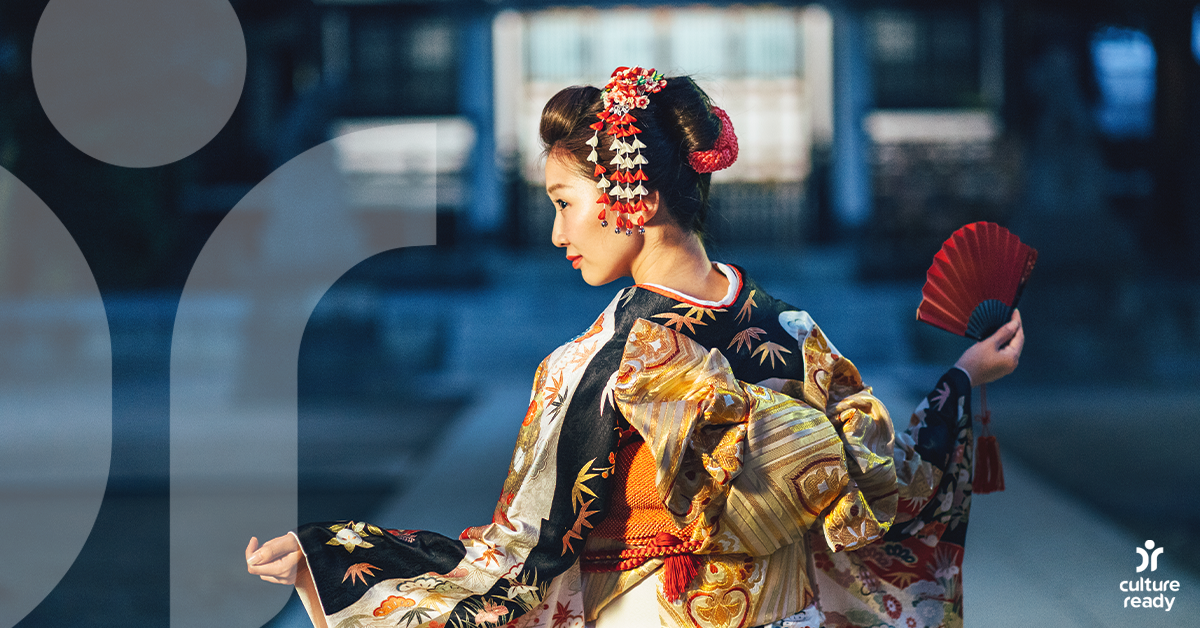The Kimono: From Everyday Garment to Art Form
Worn for formal celebrations such as weddings, funerals, and tea ceremonies, the kimono has a history that dates back to the 8th century and was once an everyday piece of clothing.
During the Heian Period (794-1185) people began wearing a piece of clothing like the kimono with a “hakama”—a long skirt that is either undivided or has divided legs like pants. Once it became fashionable to wear a kimono without the “hakama,” the “obi,” the wide sash worn around the waist, was added.
The kimono became an everyday garment during the Kamakura Period (1185-1333). Both men and women wore brightly colored kimonos. Colors were based on seasons and even political and family ties.
During the Edo Period (1603-1868) Japan was divided into feudal domains ruled by lords. Samurais from each of the domains were identified by the unique colors and patterns of their kimonos.
It was during this time that kimono-making became a specialized craft and the kimono an expensive art piece passed down from generation to generation. Depending on the time of year, kimonos were made from different materials—heavy silk for fall and winter and a linen and cotton version known as a “yukata” for the summer.
Eventually, in the late 19th and early 20th centuries, the kimono fell out of fashion. This was driven by comfort and the Japanese government encouraging people to adopt Western-style clothing. However, in 1923 after people’s possessions were destroyed by an earthquake, the ready-to-wear meisen kimono became popular. Made from silk threads that could not be used elsewhere, this informal garment featured bright designs inspired by the Art Deco movement.
Historically, the kimono has been linked with tradition and manners. It not only communicates respect but also can convey rank and status, depending on its color and the way the “obi” is knotted at the back.
